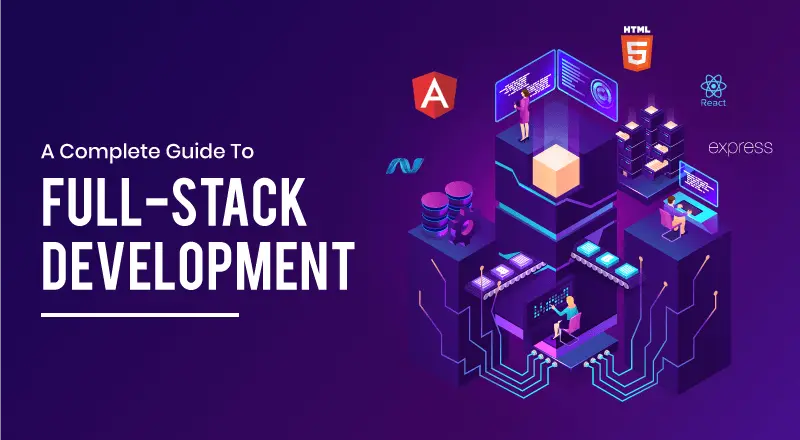Full stack development Free Material

What is Full Stack Development?
Full-stack engineers are specialists in both the front-end and back-end; in this way, the full stack of innovation that makes up a site. They are capable in both front-end and back-end dialects and systems, just as in worker, organization and facilitating conditions. To get to this expansiveness and profundity of information, most full-stack engineers will have spent numerous years working in a wide range of jobs. They likewise will in general be knowledgeable in both business rationale and client experience, which means they are exceptional to get hands on, yet can likewise direct and counsel on methodology as well. Maybe rather than creating complex exclusive code each an ideal opportunity for making various sites, systems have become famous assets to make numerous cycles more proficient and advantageous.
Libraries like jQuery are amazingly famous for front-end engineers utilizing JavaScript, as they can carry out different capacities that different designers have effectively developed and tried. JavaScript systems like AngularJS and EmberJS address a significant number of the difficulties looked by front-end designers by creating shows that can without much of a stretch be executed with any site. On the backend, there are systems like Rails for the programming language of Ruby, Django for Python, and CakePHP for working with PHP. The principal reason for systems is to make a designer’s work simpler by building up a bunch of shows that can be received for a considerable lot of the various cycles engaged with making a site—from how data is displayed to how it is put away and gotten to in the data set.
Why Full Stack Development?
An individual who can create both customer side and worker side programming are known as a full stack designer. Their duties include associating on destinations, keeping up and creating information bases and creating workers for the sites to work and to code. Full stack engineers guarantee the receptiveness of use and they work close by visual fashioners too for highlights of website architecture and numerous different assignments. They are important to investigate web projects from the beginning to its last structure. They work in a speedy climate and ability to deal with the tasks with information and preparation. Subsequently it is vital that one gets legitimate preparation prior to beginning their profession in this field.
Every one of these things make full-stack designers a significant piece of present-day computerized office. Full stack engineers can complete assignments in complex web projects. Likewise, full stack designers make new documentations, guides, and execute new norms to improve advanced office’s web development measures. At the end of the day, an advanced, proficient computerized organization can’t create without full-stack web designers. Full stack engineers comprehend and decide the idea of coding and are makers all alone. Additionally full-stack designers have capacity to utilize the most mainstream systems, libraries, CMS and stages. Full-stack web engineers can give WordPress web development administrations to make proficient sites or web applications.
Important materials
E-books –
The Full Stack Developer by Chris Northwood –
Pro MERN Stack by Vasan Subramanian –
Full Stack AngularJS for Java Developers –
Full Stack JavaScript: Learn Backbone.Js, Node.Js, and Mongodb by Azat Mardan –
Mastering Full-Stack React Web Development by Tomasz Dyl & Kamil Przeorski –
Videos –
How to Become a Full Stack Web Developer | Complete Roadmap – https://youtu.be/nknwAOtmtDk
What Is Full Stack? | What Is Full Stack Web Development | Full Stack Developer Tutorial – https://youtu.be/8KaJRw-rfn8
3 Reasons Why You SHOULDN’T Become a Full-Stack Developer – https://youtu.be/vgEVfaDmfTk
What Is a Full Stack Developer & How To Become a Full Stack Developer in 1 Year – https://youtu.be/UtDpYVf9jKU
How to become a Full Stack Developer ? – https://youtu.be/fRHygXxCl1c
Important tips
A full stack designer is a web engineer or architect who works with both the front and back closures of a site or application—which means they can handle projects that include information bases, building client confronting sites, or even work with customers during the arranging period of undertakings. HTML (Hypertext Markup Language) is the foundation of the Web. Each site you visit is worked with HTML. It deals with all the construction and substance. HTML5 is the current cycle of HTML on the Web, in spite of the fact that locales worked with more established forms actually run fine in your program. CSS (Cascading Style Sheets) is the thing that controls the manner in which the HTML looks on the page. CSS sets the tones, textual styles, foundation pictures, and surprisingly the manner in which the page is spread out (you can utilize CSS to organize the HTML components on a page anyway you need, regardless of whether it’s not quite the same as the request they’re orchestrated in the HTML record). CSS3 is the current cycle of CSS on the Web, and it adds a huge load of highlights for things like fundamental intuitiveness and movements.
